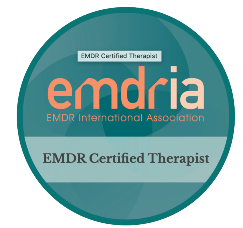What is the Difference Between PTSD and Complex PTSD?
There is extensive information in the media these days describing PTSD, and as a result many people are generally familiar with it’s symptoms. I often receive calls for therapy from potential clients stating that they believe they have PTSD. They are feeling anxious, depressed and are having re-intrusive thoughts about a traumatic experience. Although these could be symptoms of PTSD, they could also be symptomatic of a more complex diagnosis known as Complex PTSD. This is an important distinction to a therapist, as the two issues are addressed differently in therapy.
What are the symptoms of PTSD?
PTSD, or Post Traumatic Stress Disorder, is defined by symptoms that arise in response to a traumatic incident that overwhelms one’s ability to cope. Nightmares or feelings of anxiety triggered by traumatic memories, are some of the most common symptoms of PTSD. There may also be parts of the trauma that are not remembered, or avoidance of situations that are reminders of the trauma. Other potential symptoms include depressed feelings, feelings of guilt or shame, irritability, aggression or hyper-vigilance. All of these difficult feelings and thoughts can lead to isolation and loneliness, or difficulty functioning in day-to-day life.
Why do people develop PTSD?
When someone experiences a traumatic incident, it invokes feelings of fight, flight or freeze, located in the limbic system of the brain. Sometimes this experience is emotionally resolved on its own as it moves appropriately to storage in the portion of the brain that holds one’s narrative. It is in that portion of the brain that one can appropriately access a healthy perspective about the experience and bad feelings are no longer triggered by internal or environmental cues.
However, there are times when a traumatic experience is not spontaneously resolved and gets stuck in that part of the brain that holds the feelings of fight, flight or freeze. This can happen when there is a lack of support system following the event, limited access to coping skills, or if the incident happens on top of pre-existing stressors or mental health conditions such as depression or anxiety. Other factors may be that the event involved feelings of extreme helplessness or horror.
For example, someone may experience this if they were in a bad car accident and months later they are having nightmares about it and experiencing feelings of extreme anxiety or panic when in a car. They may “know” that they are relatively safe and that the incident is over, but nevertheless, they “feel” they are not safe and have reactions as though they are about to experience the accident again and need to maintain an unreasonable level of hyper-vigilance in order to stay safe.
What are the symptoms of Complex PTSD?
Complex PTSD differs from PTSD in that it develops as a result of chronic exposure to traumatic events over a period of months or even years. The types of events that are typical with this type of diagnosis are things like torture, prisoner of war situations, long term childhood sexual abuse, prolonged physical or emotional abuse, or sex trafficking situations. The symptoms include significant challenges with regulating emotions, periods of amnesia or dissociation, difficulty in relationships, distorted perspective about the perpetrator, and feelings of guilt, shame or lack of self worth. There may be intrusive re-experiencing of the trauma, as in PTSD, but this is coupled with more extreme distortions of perspective, dissociation or more significant problems with emotional stability.
An example of this would be if someone had been abused for years by a spouse or partner. In addition to the symptoms of PTSD, they also have a feeling that somehow they were responsible for the abuse, or feel shame and guilt that prohibits them from developing a positive sense of self or developing healthy relationships. In addition, they may feel like they have times when they “check out” or feel like they are watching themselves from “the outside looking in.” These are just a few of the symptoms they may experience, but they would be enough to cause one to suspect a more complex form of PTSD.
What is the difference in the way the two diagnoses are addressed in therapy?
There are a number of different approaches to treating PTSD and Complex PTSD. Eye Movement Desensitization and Reprocessing is an approach that is particularly effective in treating these issues, although it is used with some modifications when treating Complex PTSD as opposed to PTSD. With PTSD, the time it takes to prepare for the EMDR therapy may be shorter in duration, as well as the length of time it takes to work through the trauma. However, in the case of Complex PTSD, there is much more extensive work involved in preparing for the EMDR therapy and helping the client to be able to regulate their emotions, maintain a sense of being present during the trauma work, and develop trust in the therapist. The trauma work itself can also take much longer, as it needs to be paced in a way that is more manageable and not de-stabilizing for the client.
Regardless of whether you are dealing with PTSD or Complex PTSD, the good news is that working with an EMDR therapistcan be tremendously beneficial in resolving the unpleasant symptoms that accompany these diagnoses. This therapy can provide elimination of symptoms that may help you to feel more connected to family, friends and most importantly, yourself. When looking for a therapist to help you through these issues, it is wise to be certain that they are qualified with training and experience in treating these issues, so as not to make matters worse. Don’t be afraid to ask questions when interviewing therapists prior to scheduling an appointment.
At Greenwood Counseling Center provide complex PTSD, PTSD, and anxiety counseling in Centennial, Colorado and as a result we are well-versed in helping clients heal from the pain associated with these diagnoses. Our qualified therapists will be happy to answer your questions and take the time to begin to build the trusting relationship necessary to do the trauma work.
Click here for more information on PTSD Treatment.





